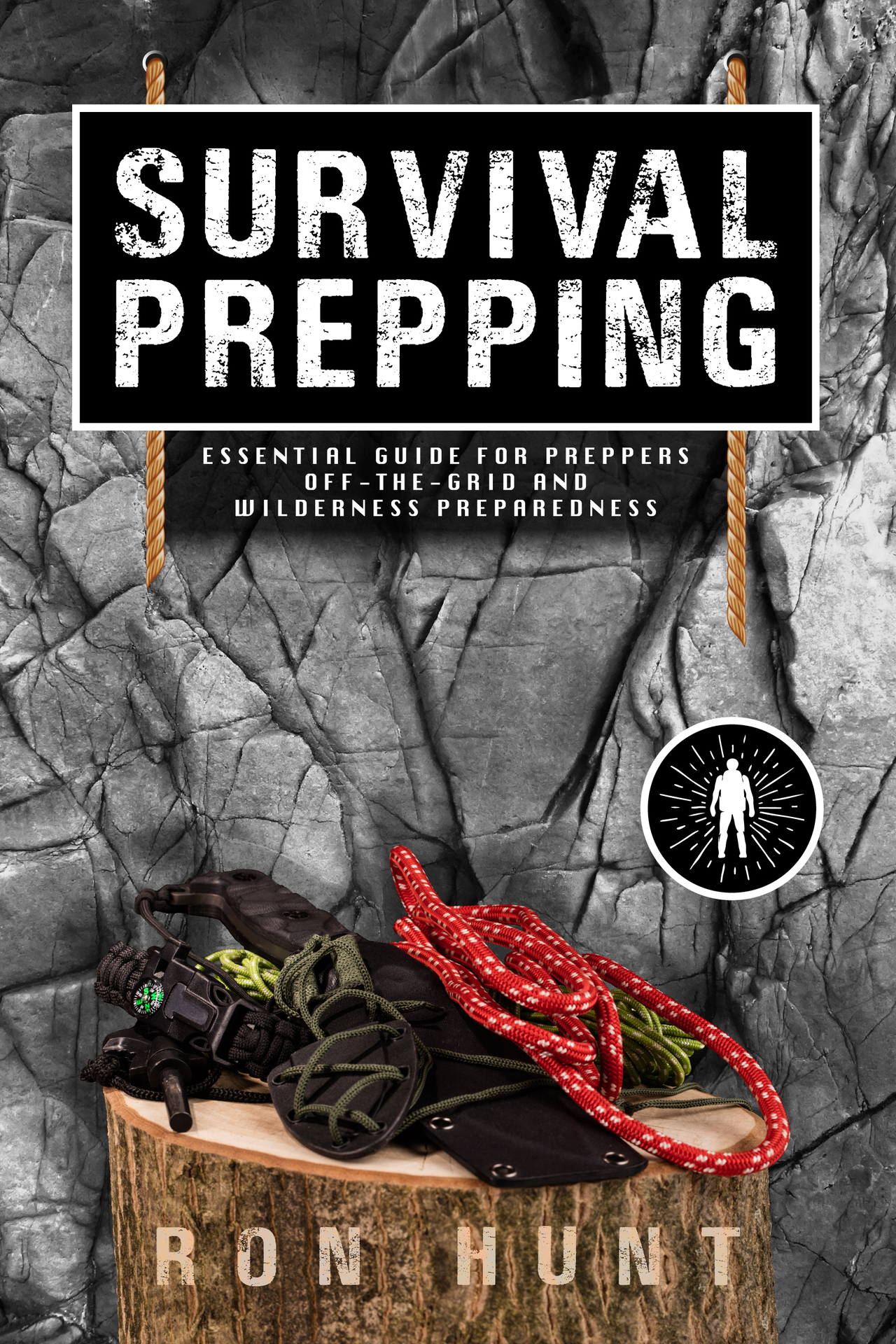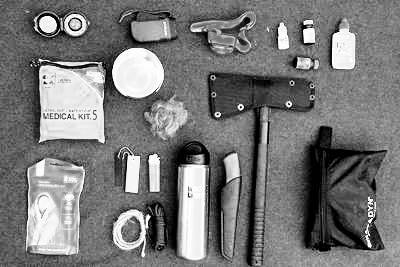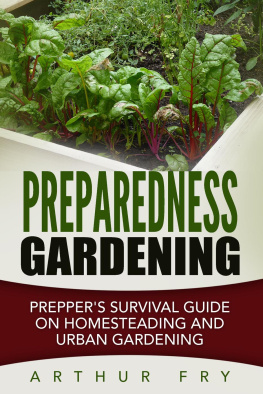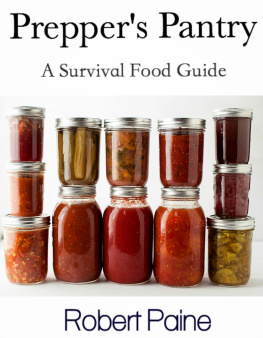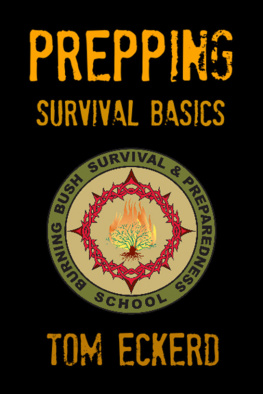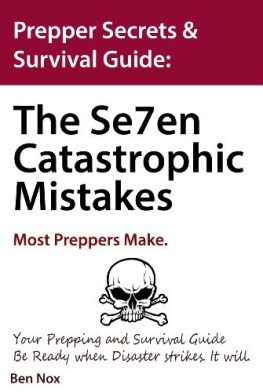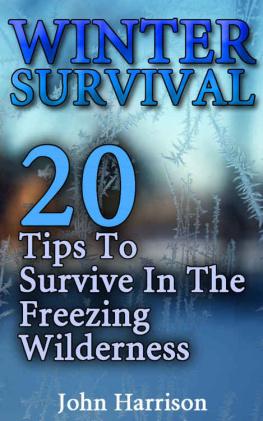Survival Prepping
Essential Guide for Preppers
Off-the-grid and Wilderness Preparedness
Copyright 2020 by Ron Hunt - All rights reserved.
This document is geared towards providing exact and reliable information with regards to the
topic and issue covered. The publication is sold with the idea that the publisher is not required to
render accounting, officially permitted, or otherwise, qualified services. If advice is necessary, legal
or professional, a practiced individual in the profession should be ordered.
- From a Declaration of Principles which was accepted and approved equally by a Committee of
the American Bar Association and a Committee of Publishers and Associations.
In no way is it legal to reproduce, duplicate, or transmit any part of this document in either
electronic means or in printed format. Recording of this publication is strictly prohibited and any
storage of this document is not allowed unless with written permission from the publisher. All
rights reserved.
The information provided herein is stated to be truthful and consistent, in that any liability, in
terms of inattention or otherwise, by any usage or abuse of any policies, processes, or directions
contained within is the solitary and utter responsibility of the recipient reader. Under no
circumstances will any legal responsibility or blame be held against the publisher for any
reparation, damages, or monetary loss due to the information herein, either directly or indirectly.
Respective authors own all copyrights not held by the publisher.
The information herein is offered for informational purposes solely and is universal as so. The
presentation of the information is without contract or any type of guarantee assurance.
The trademarks that are used are without any consent, and the publication of the trademark is without permission or backing by the trademark owner. All trademarks and brands within this book are for clarifying purposes only and are the owned by the owners themselves, not affiliated with this document
Introduction
This book will show many of the basic and some technical issues about prepping. The sort of thing you have better to know when SHTF.
After reading it all, or a part of it, you will easily remember some hacks that could make the difference!
No one is fully aware of how many preppers exist in the world; however, it is safe to assume that there are three to four million in the USA alone. Even though at the first impression, this seems like a large amount of the population, in estimate it is only slightly more than 1% of the overall US population. When you consider that, it is quite surprising.
First is the hopeful prepper. This is a person who wants to embrace preparedness but does not know where to begin. He or she might also feel they do not have enough money to prep.
Second is the amateur prepper. This prepper has begun to prep however, needs help in sorting through an overwhelming amount of advice and preparedness strategies both online and in person. Whether it is for handholding or training, inexperienced preppers have started their adventure but keep trying to find information and helpful advice to make sure they are on the right path.
Third is the committed prepper, someone who has embraced the preparedness lifestyle with gusto. That prepper has equipment, expertise, and abilities but is searching to fine-tune their preps with superior strategies for survival healthcare, living off-grid, and coping with civil unrest. They actively compare their personal knowledge with others and provide pointers to help other preppers learn and grow. I consider myself to be a committed prepper.
Fourth and final is the diehard prepper. This prepper is making plans for a real apocalypse and devotes enormous amounts of time and effort to make sure that he or she can survive. The diehard prepper may also have a nicely-stocked bug-out retreat where they are able to live out their days if the end of the world has come.
Being a diehard prepper has been somewhat glamorized by the entertainment industry. This serves to disillusion and discourages individuals who are not able to create this sort of alternative life for themselves.
I do not mean to suggest that any stage of prepping is a bad. Instead, its our job to figure out our own ability to make preparedness decisions that fit our specific conditions. There is no such thing as the one-size-fits-all prepper.
Table of Content
Chapter 1-- What You Need
Before you pick a camp and start navigating through the wilderness, it is important to plan the right backpack full of the stuff you will want to survive, but roughing it does not mean struggling. In this chapter, we will assist you in identifying the essential gear, tools, and clothing items that are handy when living outdoors.
1. Survivalists Tool Kit: Necessities for covering any contingency.
Contingencies in the wilderness abound, so it is essential to plan for as many as possible. A compass will help you in finding your way; even better is a handheld GPS device. Flashlights and glow sticks help you in finding your way in the dark, and a flare gun will help others find you in an emergency. For setting up camp, Paracord or rope, a tarp, duct tape, and cable ties are essential. Also essential is a great multi-tool, folding shovel, and gloves. Include water-proof matches, a lighter, and fire starter kit; redundancy is a good thing in this instance. In a small tin, store fishhooks and line, razor blades, stitching needles and thread, safety pins, nails, a small magnet, and a little cash.
2. How to Pack: Simple hints for packing your backpack.
A well-packed backpack is considered necessary for your comfort and safety. Poor weight distribution results in muscle aches and needless pressure on your backbone. Place heavy gadgets water, meals, and cooking tools in the middle of your pack, close to your body. Use medium weight items clothes, tarps, and rain gear to cushion the heavier items, securing them so the load does not shift while you are hiking. Store your sleeping bag on the back of your backpack or tie it to the bottom. Purchase items that you are likely to need regularly in the side and outer pockets compass and map, sunglasses, toilet paper, and trowel, sunscreen, bug repellent, pocketknife, flashlight, snacks, and a small towel.
3. What to Wear: Prepare for layering
Depending upon the geographic area of the wilderness region you are journeying in, and the time of year, temperatures can range dramatically over the duration of 24 hours. Layer your apparel to save heat and keep your weight light. A fleece jacket, windbreaker, and waterproof outer jacket should be sufficient to address worst-case scenarios. A pair of sandals and water shoes round out your wardrobe with gloves, a hat, and a headband.
4. Useful multi-tools: Must-have survival equipment
For flexibility, a terrific multi-tool is a campers best friend, and there are many types on the market. When comparing the want for best capabilities and the devices weight, it will become apparent that less complicated is better. Search for a multi-tool that has an ordinary and serrated blade, pliers with a twine cutter, carbide knife sharpener, bottle, and can opener, and a lanyard loop. Pay close attention to the materials and quality; look for titanium handles, 154CM metallic blades, and 420 stainless steel construction. If you plan on carrying a small hatchet for cutting firewood, consider a multi-tool hatchet and select that instead.

